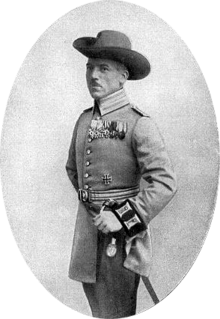
Back هيرمان ديتزنر Arabic هيرمان ديتزنير ARZ Hermann Detzner German Hermann Detzner French Hermann Philipp Detzner PFL Децнер, Герман Russian Hermann Detzner Swedish Hermann Detzner Vietnamese
Hermann Philipp Detzner | |
|---|---|
 Hermann Detzner, portrayed on the jacket of the 1921 edition of his book Four Years Among the Cannibals. | |
| Born | 16 October 1882 Speyer, Bavaria, German Empire |
| Died | 1 December 1970 (aged 88) Heidelberg, Baden-Württemberg, West Germany |
| Allegiance | |
| Service/ | Imperial German Army Schutztruppe (Kamerun and German New Guinea) |
| Years of service | c. 1901–1919 |
| Rank | Major |
| Unit | 6th Infantry Regiment (Prussia) 2nd Pioneer Battalion |
| Battles/wars | World War I |
| Awards | Iron Cross (1st Class) Honorary degree, University of Köln |
| Other work | Engineer, topographer, explorer, government official, writer |
| Signature | |
Hermann Philipp Detzner (16 October 1882 – 1 December 1970) was a German engineer and surveyor, who served as an officer in the German colonial security force (Schutztruppe) in Kamerun (Cameroon) and German New Guinea. He gained fame for evading capture after Australian troops invaded German New Guinea at the start of World War I.
In early 1914, the German government sent Detzner to explore and chart central Kaiser-Wilhelmsland, the imperial protectorate on the island of New Guinea. When World War I broke out in Europe, he was far from civilisation and without radio contact. He refused to surrender to Australian troops when they occupied German New Guinea, concealing himself in the jungle with a band of approximately 20 soldiers. For four years, Detzner and his troops provocatively marched through the bush, singing "Watch on the Rhine" and flying the German Imperial flag. He led at least one expedition from the Huon Peninsula to the north coast, and a second by a mountain route, to attempt an escape to the neutral Dutch colony to the west. He explored areas of the New Guinea's hinterland formerly unseen by Europeans.
After finding out that the war had ended, Detzner surrendered in full dress uniform, flying the Imperial flag, to Australian forces in January 1919. He received a hero's welcome when he returned to Germany. He wrote a book about his adventures – Four Years Among the Cannibals in the Interior of German New Guinea under the Imperial Flag, from 1914 until the Armistice – that sold well in Great Britain and Germany, entered three printings, and was translated into French, English, Finnish and Swedish. He received a position in the Imperial Colonial Archives, and appeared frequently on the lecture circuit throughout the 1920s. In the late 1920s, scientific portions of his book were discredited. In 1932, he admitted that he had mixed fact and fiction and, after that time, eschewed public life.